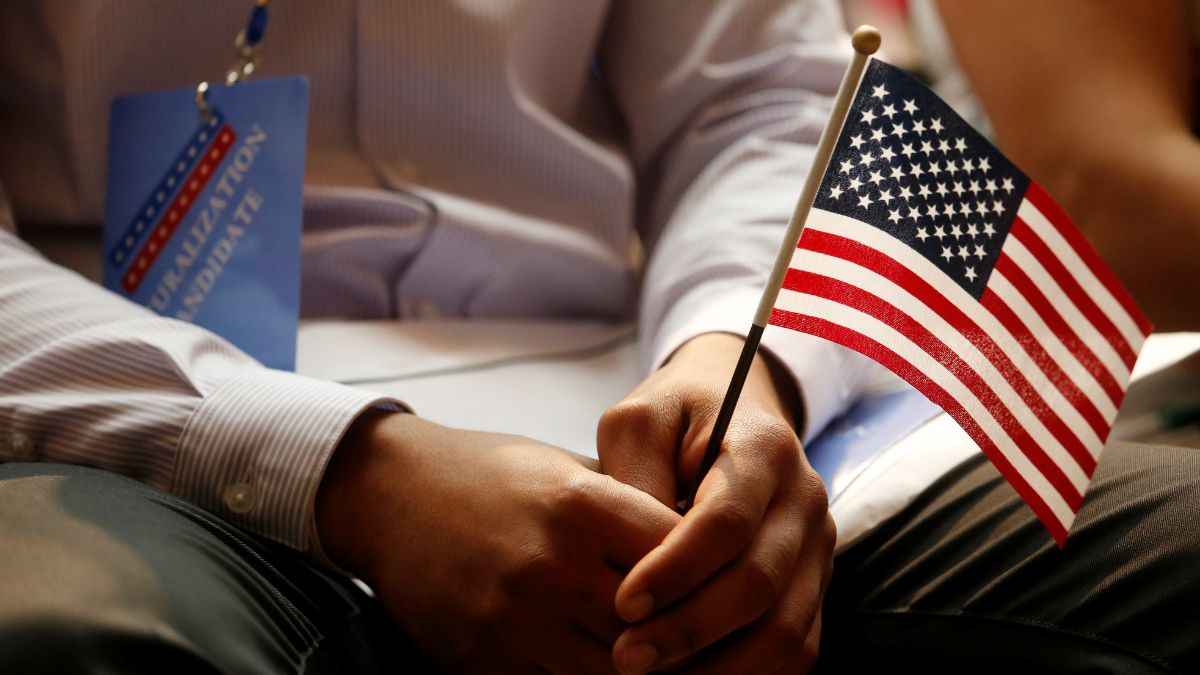For nearly 1.34 lakh dependent Indian immigrants in the United States, turning 21 this year won’t be a milestone to celebrate—it will be a ticking clock that could possibly force them into “self-deportation” from the only country they’ve ever known as home.
Known as “documented dreamers,” these individuals arrived in the US as children with their NRI parents on H-4 dependent visas. However, the moment they turn 21, their visa expires, leaving them in legal limbo.
Until now, US immigration policies provided a two-year window for these young adults to transition to a different visa status after “aging out.” But a series of policy shifts under the Trump administration, combined with recent court rulings, has thrown their future into uncertainty.
So why is this happening, and what options do they have now? Here’s a closer look.
The DACA ruling
A recent ruling by a US federal appeals court in Texas has declared the Deferred Action for Childhood Arrivals (DACA) programme unlawful, leaving thousands of young immigrants, including many Indians, facing an uncertain future.
Introduced by then-President Barack Obama in 2012, DACA offered temporary, renewable two-year protection from deportation to undocumented immigrants who arrived in the US as children, including those on dependent visas.
At the time, Obama described the move as an effort to “mend our nation’s immigration policy, to make it more fair, more efficient, and more just – specifically for certain young people sometimes called ‘Dreamers’.”
The term “Dreamers” originates from the Development, Relief, and Education for Alien Minors (DREAM) bill, which sought to provide a path to permanent legal residency for undocumented immigrants. Though repeatedly introduced in the US legislature, the bill was not passed. After yet another failure, the Obama administration implemented DACA as an alternative.
Impact Shorts
More Shorts“They were brought to this country by their parents – sometimes even as infants – and often have no idea that they’re undocumented until they apply for a job or a driver’s license, or a college scholarship,” Obama said at the time.
Since then, hundreds of thousands of young immigrants from various countries have received DACA permits. According to estimates from the non-profit South Asian Americans Leading Together (SAALT), approximately 4,000 active DACA recipients are of South Asian or Indian origin.
With this programme now ruled unlawful, many young Indian immigrants are left with few options, uncertain about what lies ahead.
What are the options?
For some, switching to an F-1 student visa seems like a possible way to stay in the US, but it comes with major challenges. H-4 visa holders who transition to F-1 status are classified as international students, which means they lose access to in-state tuition, federal financial aid, and certain scholarships.
“I have lived here since I was six. My education, friends, and my future, everything is here. But now, I am being told that I might have to leave the only country I have ever known,” a 20-year-old nursing student from California, whose dependent visa expires in August, told The Times of India. While converting to an F-1 visa is an option, she admitted it would put a “huge financial burden on our families, many of whom are already struggling with the high cost of living in the US.”
With limited options, some of these young immigrants are now considering moving to countries like Canada or the UK, where immigration policies are seen as more inclusive.
“It might be an easier option. Even if I stay and study here, I don’t know what my prospects are of getting a job and securing my future. My parents are planning to return to India after retirement, so I have nothing to stay back for,” a Memphis-based undergraduate student who turns 21 in April told the publication. He added, “I can’t see myself moving back to India as it seems like just another foreign land to me. I left when I was a child. I would have to start afresh.”
The green card worry
The massive backlog in the US employment-based green card system is a serious concern among this section. According to a report by Economic Times, around 10.7 lakh Indians are currently stuck in the employment-based Green Card queue (EB-2 and EB-3 categories), with an estimated processing time of 134 years.
For dependent children waiting in this line, absence of DACA protection has compounded the worry. Many fear they may have to self-deport before they ever receive US residency.
Muhil Ravichandran, 24, who arrived in the US at the age of two, told TOI that she may have to leave the country she has called home for nearly two decades as she has “aged out”.
“This means having to leave my family because they have already received their green cards. It is heartbreaking that I have to spend every day in fear that I may have to leave my home, simply because I aged out,” she said.
“Due to the Green Card backlog, I had aged out by the time my parents finally received their green cards. My future is now uncertain,” she added.
Another student from Texas echoed similar concerns. “Our waiting period is 23 years, and I am turning 21 this October. What am I supposed to do after that? Earlier, people would get two years of extension under DACA and they could study, work, and get social security numbers. But after the new government came to power and banned birthright citizenship, everything is confusing,” he added.
With input from agencies
)